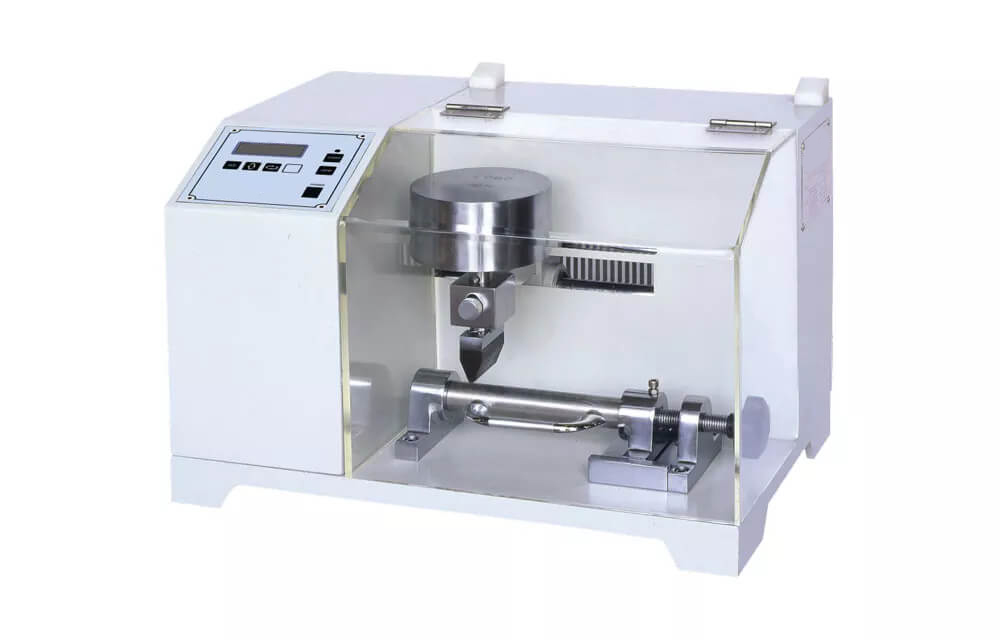Evaluates hose cover resistance to rubbing wear under controlled conditions.
WhatsApp : +86 13816217984
Email : info@qinsun-lab.com

Meet the standard:
ISO 6945
ASTM D6264
SAE J1127
Product Introduction:
Hose covers are the primary protection layer against environmental factors and mechanical damage, including abrasion. Abrasion occurs when the hose rubs against other components, the ground, or other surfaces during operation. A Hose Abrasion Tester simulates this rubbing action in a controlled environment to quantify the resistance of the hose cover material to wear.
The test typically involves securing a section of the hose specimen in a fixture. A specified abrasive element (which could be an abrasive fabric, sandpaper, steel wire, a rotating wheel with an abrasive surface, or an oscillating bar) is brought into contact with the hose cover under a defined force or tension. A mechanism then creates relative motion between the hose and the abrasive element, simulating rubbing. This motion can be oscillating, reciprocating, or rotating, depending on the test method and the type of abrasion being simulated.
The instrument is used in laboratories for:
Evaluating and comparing the abrasion resistance of different hose cover materials and designs.
Quality control during the manufacturing of hoses to ensure the cover meets abrasion resistance specifications.
Research and development of new hose cover compounds with improved wear characteristics.
Validating hose performance for specific applications where abrasion is a significant concern.
Investigating field failures related to hose cover wear.
Product Advantages:
Provides objective, quantitative measurement of hose cover abrasion resistance.
Essential for selecting hoses that can withstand abrasive environments and prevent premature failure.
Helps predict the service life of hoses subjected to rubbing wear.
Standard compliant test methods are available (ISO 6945 is a key standard).
Allows for controlled and repeatable simulation of abrasive wear conditions.
Useful for quality control, material comparison, and product development.
Product Features:
Fixture or clamping mechanism to securely hold the hose specimen during the test.
Abrasion head or element made of a specified abrasive material (e.g., abrasive fabric, steel wire, standardized abrasive paper or wheel).
Mechanism to apply a controlled and consistent contact force or tension between the hose specimen and the abrasive element.
Drive system to generate controlled relative motion (oscillating, reciprocating, rotating) between the hose and the abrasive element at a specified speed and stroke/distance.
Cycle counter to record the number of abrasion cycles completed.
Wear detection system (e.g., electrical contact sensor, visual inspection aid) to determine when the hose cover has worn through or reached a specified wear level.
(Optional) System for applying tension or pressure to the hose internally during the abrasion test to simulate operational conditions.

Qinsun Instruments Co., LTD is a professional laboratory testing instrument manufacturer in China,Have been focusing on laboratory instrument R&D more than 30 years and have rich industry experience,Based on international testing standards,We are also the instrument supplier for BV SGS laboratory,We provide one-stop solutions for lab instruments,Free Training and Turn-Key Service,Products exported all over the world,Offer 36 month warranty and are a trustworthy partner.
Company Phone
+86-21-6420 0566
Working hours
Monday to Friday
Mobile phone:
13816217984
Email:
info@qinsun-lab.com
